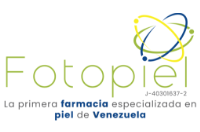TINHAS TRICOFITICAS NO RECIFE
Palabras clave:
Trichophyton spp, trichophtonosis, Mycology, tiñas tricofíticas,Resumen
En este trabajo se presentan los resultados del estudio epidemiológico
de las tricoficias en Recife, Brasil. Desde enero de 1957 hasta julio de 1959,
inclusive, más de 600 personas se presentaron al Instituto de Micología de la
Universidad de Recife procurando un diagnóstico específico de Trichophyton
spp., ya considerado el causante de sus tiñas. En realidad, solamente 142
resultaron afectadas por Trichophyton; las demás tenían afecciones causadas
por Microsporon, Epidermophyton, Candida, Torulopsis, o presentaban
pseudotinea amiantácea.
Las tricoficias eran producidas por tres especies de Trichophyton sensu
Conant et al., o sea: Tr. tonsurans, Tr. mentagrophytes (Langeronites) y Tr.
rubrum, todos asociados a la misma sintomatología.
En Recife predomina la especie Tr. tonsurans con el 75,4% de los casos;
Tr. mentagrophytes forma el 21,1 % ; por último sigue, a distancia, Tr. rubrum,
que forma apenas el 3,5% de los casos.
Tr. tonsurans ataca preferentemente el cuero cabelludo (87,9%), y
después la piel glabra (11,2%) o las uñas (0,9% : 2 casos).
Tr. mentagrophytes atacó la piel glabra en el 76,7 por ciento; el cuero
cabelludo en el 20 por ciento y las uñas apenas en el 3,3 por ciento de los casos.
Tr. rubrum atacó únicamente la piel glabra.
Los niños entre 2 y 13 años formaron el 79,6y o; los mayores de 13
años formaron el 20,1% de los pacientes; los primeros tenían afectado el
cuero cabelludo en 85,9%, mientras los segundos tenían afectada la piel
glabra en el 79,4%.
Las tiñas tricofíticas son más frecuentes en el sexo masculino (64,8%)
que en el sexo femenino (35,2%). La localización es igual en ambos sexos,
siendo en orden de frecuencia: el cuero cabelludo, la piel glabra y las uñas.
SUMMARY
This paper deals with the trichophtonosis epidemiology in Recife, Brazil;
from January 1957 to the end of July 1959 more than 600 people come to
Institute of Mycology, University of Recife looking for the specific diagnosis
of Trichophyton spp., considered then as agent of their tinea. However, only
142 persons were really affected by Trichophyton, the other ones having the
disease caused by Microsporon, Epidermophyton, Candida, Torulopsia, or
presenting pseudo amiantaceous tine a.
The trichophtonosis diseases were produced by there Trichophyton
species, sensu Conant et al, as T. tonsurans, T. mentagrophytes (Langeronites)
and T. rubrum, all causing the same sintomatology.
The Trichophyton tonsurans is 75,4% prevalent against 21,1% for T.
mentagrophytes and 3,5% for nails. The percentage relative to the
localization of tinea was 87,9% for T. tonsurans in hair skin, 11,2% for
hairless skin and 0,9% for nails, while T. mentagrophytes and 76,7% for
hairless skin, 20% for hair skin and 3,3% for nails; the T. rubrum was
found only in hairless skin.
In relation with the age of the patiens the tinea incidence was of
79,6% in children between 2 and 13 years old with 85,9% of afection in
hair skin, and 20,1% in adults, having in this case the prevalence of 79,4%
of occurrence in hairless skin.
The Trichophyton spp. studied in Recife are more constant in the
people of the masculine sex, 64,8% than in the feminine sex, 35,2%.
ZUSAMMENFASSUNG
Diese Arbeit handelt ueber die Trichophyton epidemiologie in Recife,
Brasilien; von Januar 1957 bis Ende Juli 1959 kamen mehr als 600 Leute in
das Mykologische Institut der Universitaet Recife auf der Suche der
spezifischen Diagnose von Trichophyton spp., damals als der Erreger ihrer
tinea betrachtet. Jedoch nur 142 Leute waren wirklich von Tri-
chophyton angegriffen, die anderen hatten die Krankheit durch Microsporon,
Epidermophyton, Candida, Torulopsis verursacht, oder zeigten pseudo
amiantacea tinea.
Die trichophtonosis Krankheiten waren verursacht durch drei Trichophyton
Arten, sensu Conant et al, wie T. tonsurans, T. mentagrophytes (Langeronites) und
T. rubrum, alie dieselbe sintomatologie verursachend.
Der Trichophyton tonsurans ist 15,4% vorherschend gegen 21,1% fuer T.
mentagrophytes und 3,51%'%c fuer Naegel Der verhaeltnismaessige Prozentsatz
zur Bestimmung von tinea war 87,9% fuer T. tonsurans in Haarhaut, 11,2% fuer
haarlose Haut und 0,9% fuer Naegel, waehrend T. mentagrophytes 76,7% fue
haarlose Haut hatte, 20% fuer Haarhaut und 3,3% fuer Naegel ; Der T. rubrum
wurde nur in haarloser Haut gefunden.
Im Verhaeltnis zum Alter der Kranken war das Vorkommen 79,6% bei
Kindern zwischen 2 und 13 Jahren mit 85,9% Erkrankten in Haarhaut und 20,1%
bei Erwachsenen und in diesem Falle waren 79,4% vorherschend auf Vorkommen
in haarloser Haut.
Der in Recife gepruefte Trichophyton spp. war mehr bestaendig bei Leuten
maennlichen Geschlechts, 64,8%, als bei dem weiblichen Geschlecht, 35,2%.
Descargas
Número
Sección
Licencia
Publicado por la Sociedad Venezolana de Dermatología Médica, Quirúrgica y Estética







